Easily change the height and layout of the shelves any time as your plants grow or the items you want to showcase change.
Materials:
Tools:
Here's another idea: Renting and not able to hang anything in your home? Simply lean your pegboard against a wall.
How to build plywood pegboard:
 Step one
Step one
Measure, mark and cut your plywood to 1200mm x 768mm. Clamp a straight edge to the board to use as a guide when cutting. The offcut plywood will be used for shelves.
 Step two
Step two
To make sure your holes will be in line, carefully draw a grid on the back of the board. Start with a line 54mm from the side and one 50mm from the top (see diagram), then draw more lines from the top and side, 110mm apart.
 Step two cont. (diagram)
Step two cont. (diagram)
This will create a 7 x 11 grid. If you are creating a different-sized pegboard, adjust your measurements accordingly.
 Step three
Step three
Using a 2mm drill bit, drill pilot holes at each line intersection. The pilot holes will guide your larger drill bit and ensure you drill in the correct spot.
 Step four
Step four
Using a larger 20mm drill bit, carefully drill each of the holes. When drilling, make sure your drill bit is perpendicular to the board, otherwise your pegs won’t be level.
 Step five
Step five
Sand down any rough spots on your board and wipe off any dust.
 Step six
Step six
Cut your plywood offcut into shelves. We made ours 200mm deep, at the following lengths: 260mm, 370mm (x2), 480mm and 700mm. If you decide on different sizes, be sure to measure the distance between peg holes and add a bit extra for overhang.
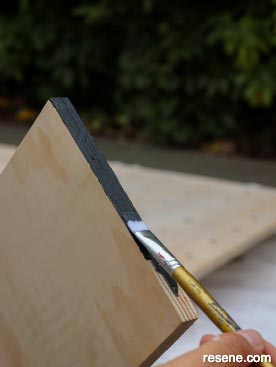 Step seven
Step seven
Using the Resene Blackjack testpot, paint the edge of each shelf and allow to dry.
 Step eight
Step eight
Apply a coat of Resene Colorwood Whitewash to the front of the board and allow to dry. Apply a second coat if needed.
 Step nine
Step nine
Cut the dowel into eleven 220mm lengths and the batten into three 550mm lengths.
 Step ten
Step ten
Sand each cut edge of the dowels.
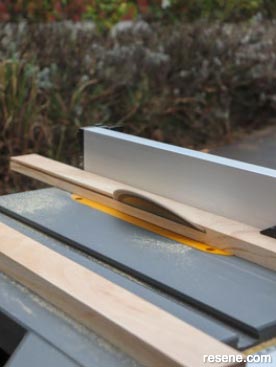 Step eleven
Step eleven
Using a table saw, trim one long corner edge off two of the battens at 45 degrees, as shown.
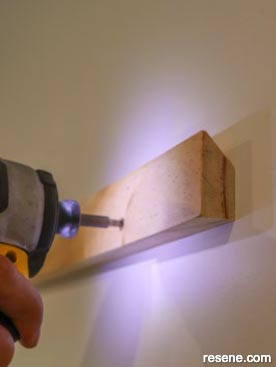 Step twelve
Step twelve
To hang the pegboard, you will use a method called the ‘french cleat’. Using 40mm screws, attach one of the cut battens to your wall, cut side up and facing the wall, as shown. Be sure to screw into a stud and use a spirit level. We hung ours 1980mm up from the floor.
 Step thirteen
Step thirteen
Using 25mm screws, attach the other cut batten to the back of your board, cut side down and facing the board, as shown. We placed ours between the first and second row of peg holes.
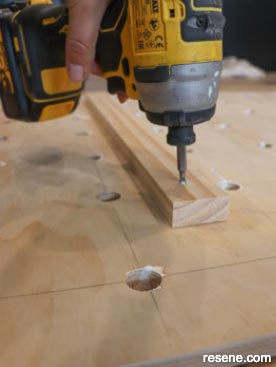 Step fourteen
Step fourteen
Screw the final batten to the back of the board, above the bottom row of peg holes. This will stop your board swinging once hanging on the wall.
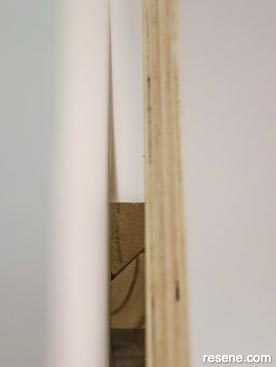 Step fifteen
Step fifteen
Hang the board in place, slotting the two battens into each other as shown.
 Step sixteen
Step sixteen
Push each of the pegs into the desired positions and place shelves on top.
 Finished project
Finished project
A closeup of the finished project.